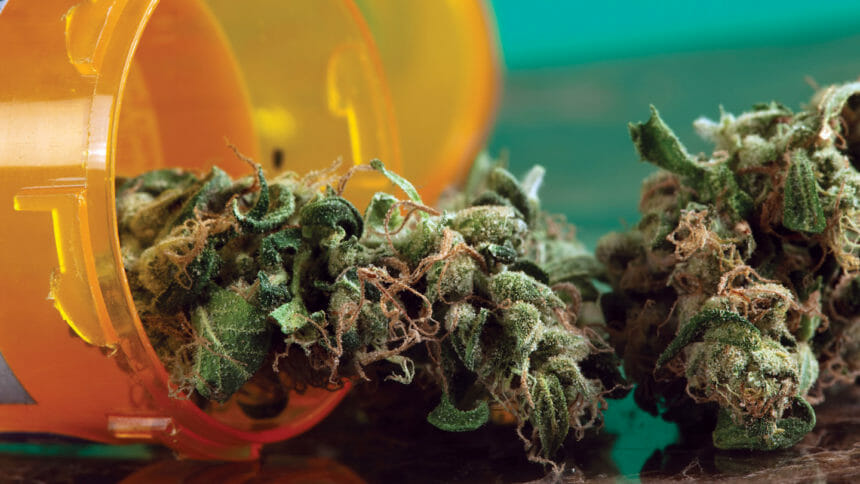
Seniors have increasingly turned to cannabis to treat chronic pain and other health problems, but the potential for adverse effects in this population has led to some unintended consequences, a new study has found.
Investigators looked at cannabis-related emergency department (ED) visits in all acute care hospitals in California from 2005 to 2019. Using diagnosis codes, they determined the rate per 100,000 visits for adults aged 65 years and older.
Huge increase in visits
Cannabis-related ED visits for older adults shot up by a whopping 1,800% over the study period — from 21 per 100,000 visits in 2005 to 395 per 100,000 ED visits in 2019, Benjamin H. Han, MD, of the University of California San Diego School of Medicine reported.
Older Black adults had the largest absolute increase over time and accounted for the highest ED visit rate in 2019. When the numbers were broken down by sex, older males stood out, with a higher overall ED visit rate in 2019 and a greater absolute increase than older women, the researchers reported. In addition, a higher comorbidities score as measured by the Charlson index was linked to greater odds of a cannabis-related ED visit in 2019 and a larger increase in visit rate over the entire study period.
Use climbs nationally
The overall use of cannabis by older adults has increased sharply over the past two decades as some states, including California, have legalized the drug for medical and recreational purposes, the researchers reported. Although evidence is spotty for cannabis’s effects on specific health conditions, older adults use it to treat a variety of problems as well as for recreation. Yet they may be more susceptible to side effects and adverse reactions, Han said.
“I do see a lot of older adults who are overly confident, saying they know how to handle it,” he said in a statement. “Yet as they have gotten older, their bodies are more sensitive, and the concentrations are very different from what they may have tried when they were younger.”
Cannabis’s effects on seniors
Cannabis use may raise the risk for injuries and falls due to its propensity to slow reaction time and impair attention. In addition, it is known to increase the risk for psychosis, delirium and paranoia, and to exacerbate cardiovascular and pulmonary diseases. For some seniors, it may interact with prescription medications.
Medical screening questionnaires often lump cannabis with illicit drugs and do not always elicit a straight answer about use, the researchers cautioned clinicians. They recommend that healthcare providers ask direct questions about use. If a patient says they use cannabis, providers can then follow up with questions about frequency of use, for what purpose, and in what form.
Patient education
“Once the provider has this type of information, they can then educate the patient about potential risks of use,” said co-author Alison Moore, MD, MPH, of the UC San Diego School of Medicine. There is still a lot to be learned about all the new forms of cannabis, combinations of THC (tetrahydrocannabinol) and CBD (cannabidiol), she said.
Her colleague Han added that, “Although cannabis may be helpful for some chronic symptoms, it is important to weigh that potential benefit with the risk, including ending up in an emergency department.”
Notably, despite the sharp increase in the number of cannabis-related ED visits among seniors, visits leveled off after California legalized recreational cannabis in 2016, the researchers reported. This suggests that legalization of recreational use did not add significantly to the number of adverse events, they said.
The study was published in the Journal of the American Geriatrics Society.
Related articles:
Residents asking about medical cannabis? A senior living community brought in the experts
Cannabis use lowers blood pressure in older adults with hypertension, study finds
‘Contradictory’ state, federal cannabis laws create conundrum for senior living operators
Medical cannabis a mixed bag for older adults, new study finds




